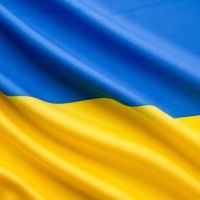[WIP] Community Atlas - Topographical map of Nibirum with ocean currents
 WeathermanSweden
🖼️ 3 images Surveyor
WeathermanSweden
🖼️ 3 images Surveyor
I have to admit that @Loopysue will recognize some of her arrows... ?
They are from Sue's great annual "The One Day Worldbuilder" - Issue 155









Comments
This is the latest version. I ask my self if there is something missing? Should there be a scale on this map? Should the map contain the names of the continents? Thinking about adding "prevailing winds"...
Should major drifts be named?
Something else I should think of before the map can be part of the community atlas?
I made at least a check for consistency so that the eastern part matches the western part...
...as a meteorologist I am thinking more of questions - where would hurricanes likely develop and can Tornado-Alleys be found on Nibirum...?
...will the weather be fine when traveling to northern Alarius...
Does any world map need a scale? I sometimes draw one, but I often wonder why, since the scale can only be accurate at the equator on an Equirectangular projection - which I am usually careful to point out by calling it the Equatorial scale. As for the rest of it - I'm totally all at sea! I only know what I learned from Geoff's Climate Cookbook. I'm more of a geologist and biologist.
@Loopysue wrote:
Does any world map need a scale?
Absolutely. Without a scale I have no idea about the size of the world. Is the circumference 1000km? 25000km? 100000km? A scale provides very usefull information to any map, even if it isn't accurate for the entire map.
Thank you Sue and Remy for your input.
On Shessars world map there is a scale - I will adapt it in some way in my map. I like the scale on your world Jerion - @Loopysue - maybe I can use that one? Or will my map then look to much like a copy of yours?
What do you think - should the map also contain the names of the continents and should major drifts be named?
For the latter, however, I have to admit that I lack the creativity for creating fantasy names...?
Some basic names would be good. Makes them a bit more interesting.
@Monsen Remy, can a script change the colour palette of a map automatically when clicking on a button or something like that?
My map uses (as you already may have suspected...) one of my 32/16 colour schemes (based on Sue's schemes) so that the user easily can change the whole appearance of a map by changing the palette in the FCW file.
Natural:
Desert:
Parchment dark:
and so on...
Or what about just a Mars look like one ?:
Just in case someone has a need / use for this...or over 100 other variants... ?
You can use the PALLOAD command in hotspot to load a palette file. The specified file has to exist though, otherwise a file dialog will pop up.
I would definitely name major currents, and all continents. What about major winds and monsoons?
This is a terrific map
Great looking map so far.
I'm not keen on the altitude scale being on the later version though, as it's hiding part of the ocean current flows there.
Stating the scale of the map (1:XXXXX - whatever it is) might be more useful than a physical scale that's accurate only for the equator, but the latter could be helpful to give a rough idea of the planet size involved, as Monsen noted.
I just gave simple "Drift" names to a couple of the main currents on my Errynor/NW Alarius map, based on Earthly examples, so inventing more names for the major currents elsewhere would seem very reasonable.
Similarly, continent names for the larger landmasses would seem in-keeping with this pattern.
I suspect most prior mappers, like myself, have tended to assume similar major prevailing wind patterns to Earth's. So, NW Alarius is essentially Europe, and Alarius overall would probably see weather patterns similar to Europe-Asia. Beyond that though, things become a bit trickier, as the parallels with Earth aren't so exact, particularly the smaller seas between most of the continents. Be interesting to see what you come up with, however!
Beautiful. I have no other words.
I know there are javascripts to switch a background on a web site, but I don't know how save they are.
They should be modifiable to change maps instead.
@Quenten thank you and yes I'll try to fix a wind layer as well.
@Wyvern - I was hoping to hear from you - just because of your map of NW-Alarius being the only(?) one with currents on it and two names for them! Do you have some more suggestions of names for other currents / drifts? Where would you place the legend for the altitudes? Outside or skip it? I am not so happy with it either.
That's a great map!
What is a 32/16 color scheme. I get frustrated drawing brown and green contour lines because there are only 16 gradients and the darker ones are so close together I cannot tell them apart. For that matter, I don't really know how "far" apart they are.
Currents often get fantastically interesting names like the Gulf Stream, etc. Here is a list from Wikipedia:
Currents of the Arctic Ocean
Currents of the Atlantic Ocean
Currents of the Indian Ocean
Currents of the Pacific Ocean
Currents of the Southern Ocean
Oceanic gyres
As you can see, nearly all are based on place manes (use Nibirum continental and regional names here), position or direction of flow, and descriptions like Stream, Current, Outflow, Gyre, Jet, Outflow, Countercurrent.
@WeathermanSweden: I think Quenten's provided you with more real-world ideas than you can likely use right now for ocean current names, though of course the names have changed over time in places, and a lot have regional (local language) variants too. The latter might be interesting to explore for Nibirum, perhaps.
I picked "Drift" names for the two main currents I showed, partly because the North Atlantic Drift, the northern part of the Gulf Stream, is relatively familiar from my own time studying geography from/in the UK, and partly because I was dealing with relatively near-coastal areas, where less-active oceanic water streams seemed appropriate. I have much interest in mapping the ocean floors in fantasy terms, and the civilisations based there, so adding some current activity was largely automatic.
With aspects like the altitude colour-key, I tend to add them on a map only where they won't be hiding anything that should be better shown. [It irritates me when published real-world maps aren't given the same consideration!] Otherwise, I simply set them in a separate side-bar of their own alongside (or below) the map. That has the further advantage they can be expanded to be easier to read, and other features, such as a scale, or notes on the map, can be added there as well. So here, you might add a key for the current arrow colours (and possibly the prevailing wind arrows, if these will be added to the same map), for instance, and maybe quantify what the different line thicknesses refer to, if relevant.
As Nibirum has more-or-less Earth-like seasons, is it worth considering a pair of maps for the alternate half-yearly views of the currents and weather systems? There are differences on Earth like this, though it does mean a lot more thinking-through of ideas than maybe is warranted for a fantasy world.
With aspects like the altitude colour-key, I tend to add them on a map only where they won't be hiding anything that should be better shown.
Since this is an atlas map, I can easily make a toggle in the atlas sidebar to hide/show such information as the color bar. This is only applicable to the actual map in the atlas of course, and not the image on the web site which will have to go with one of the approaches.
I guess you could say this whole discussion is about Current Events. (ba-dum-bump!)
All hot wind, really (I am looking forward to the wind charts)
@mike robel You can read more about the 32/16 colour schemes here:
I use 16 colours for the sea and 32 for the land. I created special export sets for FT3 so that you can change the colours of your CC3+ maps as easy as in FT3. I use the colours 224-239 for the sea and 192-223 for the land - after inspiration of @Loopysue who introduced using colours at that range for height contours...
So you can get the Nibirium world even in classical CC2 colours (called for Basic in FT3):
or even the classical FT3 default look:
...only by typing
PALLOAD filenameThank you to all the input from all here.
It will take some time - because many times you have to do even other things that have nothing to do with mapping at all...?